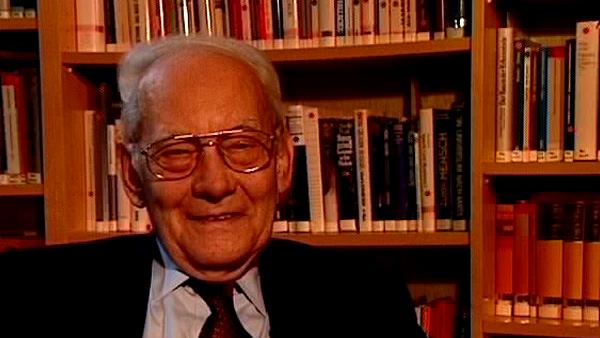NEXT STORY

Polio: acceptance of errors
RELATED STORIES

NEXT STORY

Polio: acceptance of errors
RELATED STORIES


|
Views | Duration | |
|---|---|---|---|
| 91. The versatility of viruses | 1 | 52 | 02:07 |
| 92. Polio: acceptance of errors | 47 | 02:13 | |
| 93. Virus detection methods | 43 | 03:56 | |
| 94. Prions are protein molecules not viruses | 54 | 02:14 | |
| 95. Autocatalytic proteins in BSE | 51 | 06:07 | |
| 96. Methods for early detection of prion diseases | 39 | 03:47 | |
| 97. Manfred Eigen and Ruthild Winkler's book The Laws of the... | 265 | 04:23 | |
| 98. The difference between chemical reactions and living systems | 82 | 03:32 | |
| 99. Why do we do research? | 69 | 02:18 | |
| 100. Talent | 135 | 00:43 |


We have talked about the AIDS virus, apparently the most versatile one. It really has a high rate of mutation by which it escapes many interferences. A fairly high rate you find also with influenza virus. Peter Palese in New York has studied influenza virus and found that it has a pretty high rate of change which means that within many years the virus always gets different.
[Q] And that means that the vaccination of 1996 cannot cope with the virus of 1996.
Yes, the various proteins of the virus behave in a different way. Those proteins which are on the surface, so which are exposed to the immune system, change more rapidly than those which are inside the virus. But the rate of change is quite dramatic and one has not yet really looked for the variable, hypervariable and so there might be still a number of interesting details which could help us. You know that we can vaccinate against the flu, but it doesn't stay very long and has to be repeated because the virus changes so drastically. But again there are other viruses like polio where we have wonderful protection. The Sabin vaccine, the most popular, almost has eradicated polio at least within the Western world. Worldwide still it is a big plague.
[Q] I thought coming again. There was a time when one thought it was...
Of course, with increase of travelling there are no local diseases any more. Everything which is local in very short time will be spread all over the world.
Nobel Prize winning German biophysical chemist, Manfred Eigen (1927-2019), was best known for his work on fast chemical reactions and his development of ways to accurately measure these reactions down to the nearest billionth of a second. He published over 100 papers with topics ranging from hydrogen bridges of nucleic acids to the storage of information in the central nervous system.
Title: The versatility of viruses
Listeners: Ruthild Winkler-Oswatitch
Ruthild Winkler-Oswatitsch is the eldest daughter of the Austrian physicist Klaus Osatitsch, an internationally renowned expert in gas dynamics, and his wife Hedwig Oswatitsch-Klabinus. She was born in the German university town of Göttingen where her father worked at the Kaiser Wilhelm Institute of Aerodynamics under Ludwig Prandtl. After World War II she was educated in Stockholm, Sweden, where her father was then a research scientist and lecturer at the Royal Institute of Technology.
In 1961 Ruthild Winkler-Oswatitsch enrolled in Chemistry at the Technical University of Vienna where she received her PhD in 1969 with a dissertation on "Fast complex reactions of alkali ions with biological membrane carriers". The experimental work for her thesis was carried out at the Max Planck Institute for Physical Chemistry in Göttingen under Manfred Eigen.
From 1971 to the present Ruthild Winkler-Oswatitsch has been working as a research scientist at the Max Planck Institute in Göttingen in the Department of Chemical Kinetics which is headed by Manfred Eigen. Her interest was first focused on an application of relaxation techniques to the study of fast biological reactions. Thereafter, she engaged in theoretical studies on molecular evolution and developed game models for representing the underlying chemical proceses. Together with Manfred Eigen she wrote the widely noted book, "Laws of the Game" (Alfred A. Knopf Inc. 1981 and Princeton University Press, 1993). Her more recent studies were concerned with comparative sequence analysis of nucleic acids in order to find out the age of the genetic code and the time course of the early evolution of life. For the last decade she has been successfully establishing industrial applications in the field of evolutionary biotechnology.
Tags: AIDS virus, New York, Sabin vaccine, polio, vaccination, influenza virus, Peter Palese, Albert Bruce Sabin
Duration: 2 minutes, 8 seconds
Date story recorded: July 1997
Date story went live: 29 September 2010